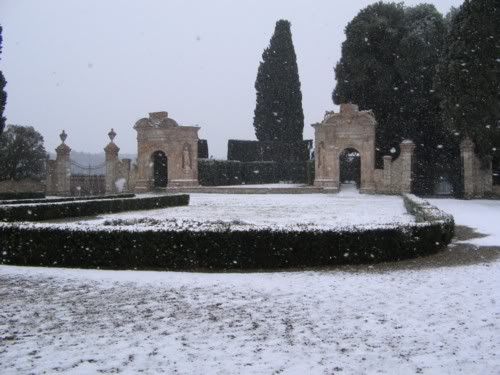Cloudehill is inspired by the famous arts and crafts gardens of England: Sissinghurst, Hidcote, Tintinhull and others. These, in turn, are derived from the renaissance gardens of Italy such as Villa D'este and Villa Lante. Our green theatre is a tribute to those magnificent Italian hill gardens. Of course, Cloudehill's location, with its reasonably gentle slopes, the dramatic forest to one side and exhilarating views to the mountains, provide plenty of inspiration and the placing of art works into the gardens give a contemporary twist to a classic design.The garden has those Edwardian garden rooms that were inspired by Italian gardens. By the Baroque as much as by the Renaissance I might add, these two styles often get conflated, but that is just my own pedantry.
Images:
Is this just a garden rule or a personal philosophy? Hmm.
Beautiful yellow magnolias.
The pond.
Fritillaria Meleagris
One of the vistas, the plantings weren't quite as full when I visited, but the gorgeous yellow poppies filled the void.
More poppies en masse.
A garden room and doorway a la Sissinghurst.
Heliobores.
Moving from the structured to the naturalistic, a field of daffodils,
one of the ephemeral delights of gardens.

one of the ephemeral delights of gardens.

A Rhodedendron.
The Garden Theatre, reminds me of the Villa Bianchi Bandinelli near Siena.

The dog on the counter.







































